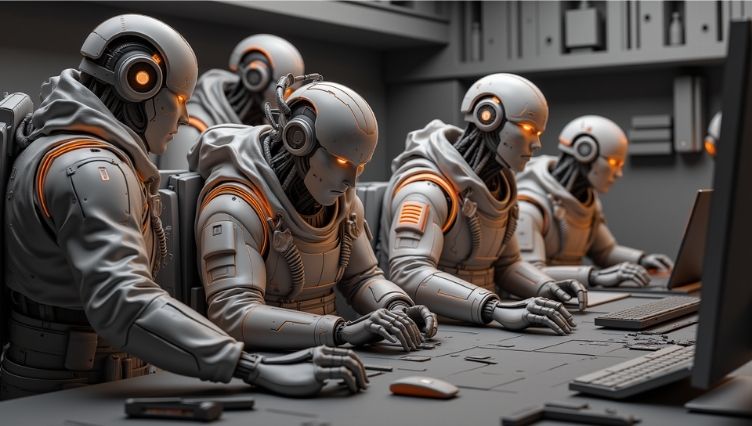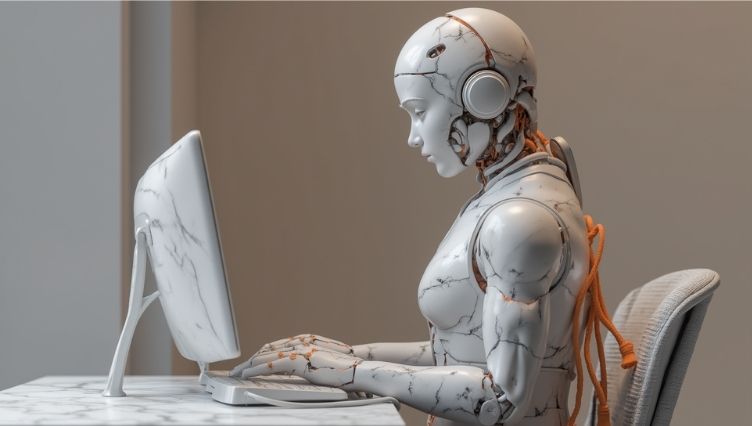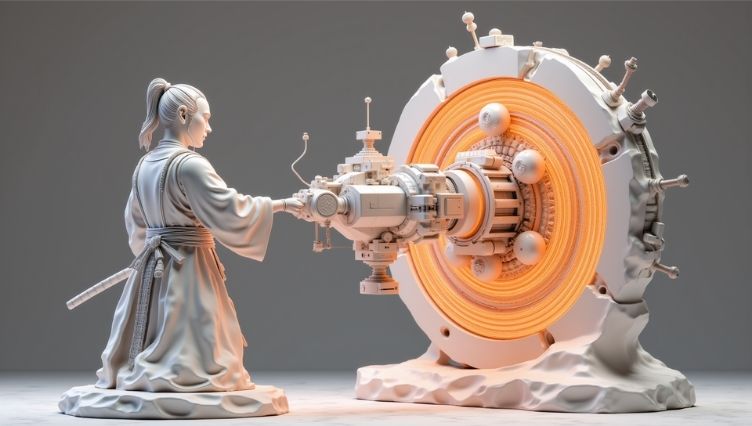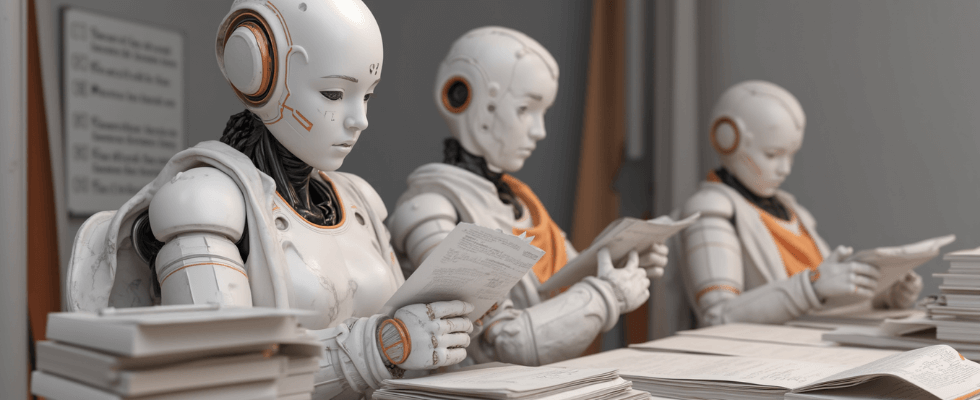Artificial intelligence (AI) and Robotic Process Automation (RPA) are your best weapons to fight your way to digital excellence. While both are running smoothly in automating tasks, they present different approaches and purposes.
The first step is to fully understand the key differences between AI and RPA. It’s not only about getting the two components to work properly. It all starts with effective automation strategy, and ends with achieving end-to-end process automation.
This article delves into these two technologies, exploring their unique strengths, diverse applications, and how they complement each other to deliver greater value, increase productivity, and enhance operational efficiency across multiple industries.
Let’s dive into it.
AI-RPA
While RPA thrives at automating rule based tasks and repetitive tasks, AI introduces cognitive abilities, letting you make smarter decisions and handle more complex processes. If you are aiming at comprehensive digital transformation and business process optimisation – this is the solution. Together, AI and RPA automate not just actions, but also human thought processes.

Robotic Process Automation
If you want to automate repetitive tasks that are typically rule-based processes, this one is for you. It leverages software robots (often referred to as software robot technology or RPA bots) to mimic human actions, interacting with applications through the user interface. They perform repetitive tasks such as data entry, data extraction, form filling, and report generation. RPA is particularly effective for high-volume, simple processes with structured data, and can be highly beneficial when dealing with legacy systems where API integration is not feasible.

Artificial Intelligence
AI develops intelligent applications that are capable of simulating human intelligence, including reasoning, learning, and problem solving. It involves the use of complex algorithms and large datasets that let machines learn from data and make decisions based on that study. AI can handle complex tasks that require intelligence, such as recognising patterns, making predictive analytics, and processing NLP. Unlike RPA, it is designed to learn and improve over time without the need for manual intervention, by analysing data and feedback. It focuses on cognitive automation, automating human thought rather than just human actions.

Machine Learning
This is a core subset of artificial intelligence that enables systems to learn and improve from experience without being explicitly programmed. It involves algorithms and statistical models that allow computers to learn patterns from data, make predictions or decisions based on that data, and improve their performance over time through iterations. Machine learning models are crucial for handling semi structured data and unstructured data, which poses a significant challenge for traditional Robotic Process Automation alone.
For example, it can be trained to interpret varying invoice formats, enabling accurate invoice processing. Alongside natural language processing (NLP) for understanding human language and computer vision for interpreting visual information, machine learning augments automation by bringing human-like cognitive capabilities to complex processes. A key difference is that while many AI tools use machine learning to get smarter, RPA tools maintain consistent software robots for unchanging tasks without smart decision making.

AI capabilities
They extend significantly beyond mere automation, enabling systems to handle dynamic and variable situations that require intelligence. With computer vision, AI can make sense of visual information, which is crucial for tasks like object recognition, image classification, and even aiding robots in user interface navigation. Natural Language Processing (NLP) allows AI to comprehend and generate human language, in applications like chatbots, sentiment analysis, and language translation. These capabilities allow AI enabled automation to process unstructured data and semi structured data, a domain where RPA alone would struggle without being explicitly programmed for every possible scenario. The AI market continues to grow REALLY fast, demonstrating the increasing demand for these advanced automation technologies.

The synergy of RPA and AI: combining strengths for intelligent automation
Imagine you have the two best warriors in your army. You, as the boss, trained them since the beginning of their existence, for them to know your strategy the best. You observe them in battle and realize that if you give them the right directions and tips – they will lead your army to conquer the whole world.
These warriors are RPA and AI, working closely together.
RPA efficiently handles the high-volume, mundane tasks and data entry, while AI brings data analysis and pattern recognition for complex decision making.
This synergy allows for minimal human intervention and fosters continuous learning and process optimisation.
For example:

in financial services, RPA can manage data collection and data entry for mortgage applications, while AI algorithms analyse large datasets to evaluate credit risk and ensure compliance with KYC regulations,

in insurance, RPA automates policy renewals, while AI enhances fraud detection by analysing past claims and customer behaviour, identifying complex fraud schemes,

retail benefits from RPA and AI through optimised inventory management, demand prediction, and dynamic price optimisation based on consumer behaviour and market conditions,

in wealth management, RPA bots can automate report generation, interacting with various internal and external systems to produce and distribute financial reports, reducing cycle time and administrative efforts,

customer onboarding processes can be boosted by using AI enabled automation for intelligent data extraction from documents, detecting fraudulent activities and improving accuracy.
While RPA implementations can be quicker and more cost-effective for simple processes, AI application is often more resource-intensive due to the need for specialised skills and large datasets. However, the scalability and adaptability of AI and RPA working together for more complicated processes are undeniable. This approach to intelligent automation can improve operational efficiency and drive ROI across various industries.

Key differentiators: RPA vs. AI
To further differentiate between AI and RPA, it’s important to take into consideration several key differences:
| BENEFIT | AI | RPA |
| Complexity | Artificial intelligence is inherently more complex than RPA, requiring advanced algorithms, large datasets, and complex models for learning and decision making. | RPA, conversely, is relatively simple, relying on predefined rules and processes. |
| Learning Ability | Artificial intelligence is designed to learn from data and feedback, enabling it to improve and evolve over time without human employees to act. | RPA, however, can only follow predefined rules, maintaining consistency but lacking inherent learning capabilities. |
| Flexibility | Artificial intelligence offers greater flexibility and adaptability, as it can be trained to perform a variety of complex tasks and processes. | RPA is designed for specific, repetitive tasks and may require manual adjustments or reprogramming for new processes or changes in workflows. |
| Human Involvement | AI can operate autonomously and make decisions based on that learning with just a little human intervention. | RPA usually requires some human input and supervision, especially for exception handling in automated processes. |
| Implementation Time | AI implementation is typically more time consuming, requiring substantial data, complex algorithms, and specialised expertise. | RPA can be implemented relatively quickly, often in weeks or months, as it only requires a set of predefined rules. |
| Skillset | AI implementation demands specialised skills in data science, machine learning, and software development, making it potentially more challenging and expensive. | RPA implementation can be achieved with a more general software development skillset. |
| Cost | Due to the need for specialised skills and advanced technology, AI implementation can be more expensive. | RPA is often more cost-effective and can provide a quicker return on investment. |
| Scalability | AI wins here. Its ability to learn from data and adapt to new processes makes it more inherently scalable for evolving environments. | Like AI, RPA can be scaled for larger and more complex business processes. |
| Use Cases | As highlighted earlier, artificial intelligence is applied to complicated tasks like fraud detection, predictive analytics, and natural language processing. | RPA is best suited for high-volume, routine tasks such as data entry, data extraction, and report creation. |
| Integration | AI may require more complex integration and customisation to work seamlessly with existing systems. | RPA wins here, but both AI and RPA can be integrated with other systems to automate end-to-end business processes. |
When to deploy RPA and when to integrate AI?
Start small by introducing RPA first, and then expand the scope of automation by implementing AI. RPA is perfect for processes that involve the same tasks over and over again. They are often time consuming, use high-volume data, follow set rules, require minimal human intervention, and involve data handling between multiple systems. These are often considered “low hanging fruit” that offer quick wins and fast time-to-market.
Once Robotic Process Automation has established a foundation for automating rule based processes, it becomes easier to introduce AI for more complex processes. Ideal areas for AI-driven automation include processes that require predictive analytics (e.g., inventory forecasts, loan defaults), are highly variable and do not depend on fixed rules, or rely on different types of data.
Let’s have a look at a simple example: if the format of invoices varies significantly, machine learning models can be trained to read, interpret, and learn from various data sets, to reach more accurate invoice processing and improve efficiency.

Challenges and considerations for RPA and AI Implementation
You need to think about the challenges of integrating RPA and AI. If you get the great benefits, there is always something you can do better, right?
- Difficulty developing an automation platform – creating an integrated solution that combines and utilises RPA and AI abilities requires careful planning and development. Here, collaboration with automation technology vendors and starting with smaller-scale prototypes is often recommended.
- Ensuring responsible AI implementation – to avoid ethical, privacy, and security issues. Mitigating risks involves choosing verified AI models, prioritising data security, and incorporating human oversight before data transitions and between automated processes to catch errors and ensure ethical decisions.
- Interdisciplinary skills, experience, and expertise – integrating RPA and AI requires a multidisciplinary approach combining knowledge of automation technologies, AI algorithms, data analysis, and domain expertise. Finding experts in these technologies is challenging, but not impossible.

The Future of RPA and AI
The future of AI and RPA together knows no bounds. These automation technologies are becoming essential to keep pace with rising demands. The recent rise of Generative AI (GenAI) enabled a notable combination of RPA and AI at specific steps in automation where new content relevant to business processes is produced. This approach is common in e-commerce communications, such as post-purchase messages and subscription management, enabling greater personalisation and more effective execution of offers. GenAI can craft messages that acknowledge a lead’s unique needs, leading to growth in sign-ups and revenue.
The global AI market is expected to reach USD 733.7 billion by 2027 and the RPA market reaching USD 7.46 billion by 2026 (via GlobeNewswire). Both fields also offer a wide range of job types, from AI Engineers and Data Scientists to RPA Developers and Architects, indicating continued demand for these technical skills. Ultimately, a holistic approach to process automation with an intelligent automation platform capable of native RPA and AI proficiency, can empower customers to achieve enterprise-wide goals.
You know your business can’t afford to tweak around the edges anymore. If you want to go beyond “pilot bots” or “proofs of concept” and push toward a full, scalable intelligent automation strategy – where RPA and Generative AI actually pull weight – then you need a platform built for that.
But let’s skip the fluff: book time with us. We’ll walk you through a real architecture that embeds GenAI in automation pipelines (not tacked on as an afterthought). And we’ll map out the steps you can start with to increase value.
Let’s turn your “what ifs” into your new standard operating model.




